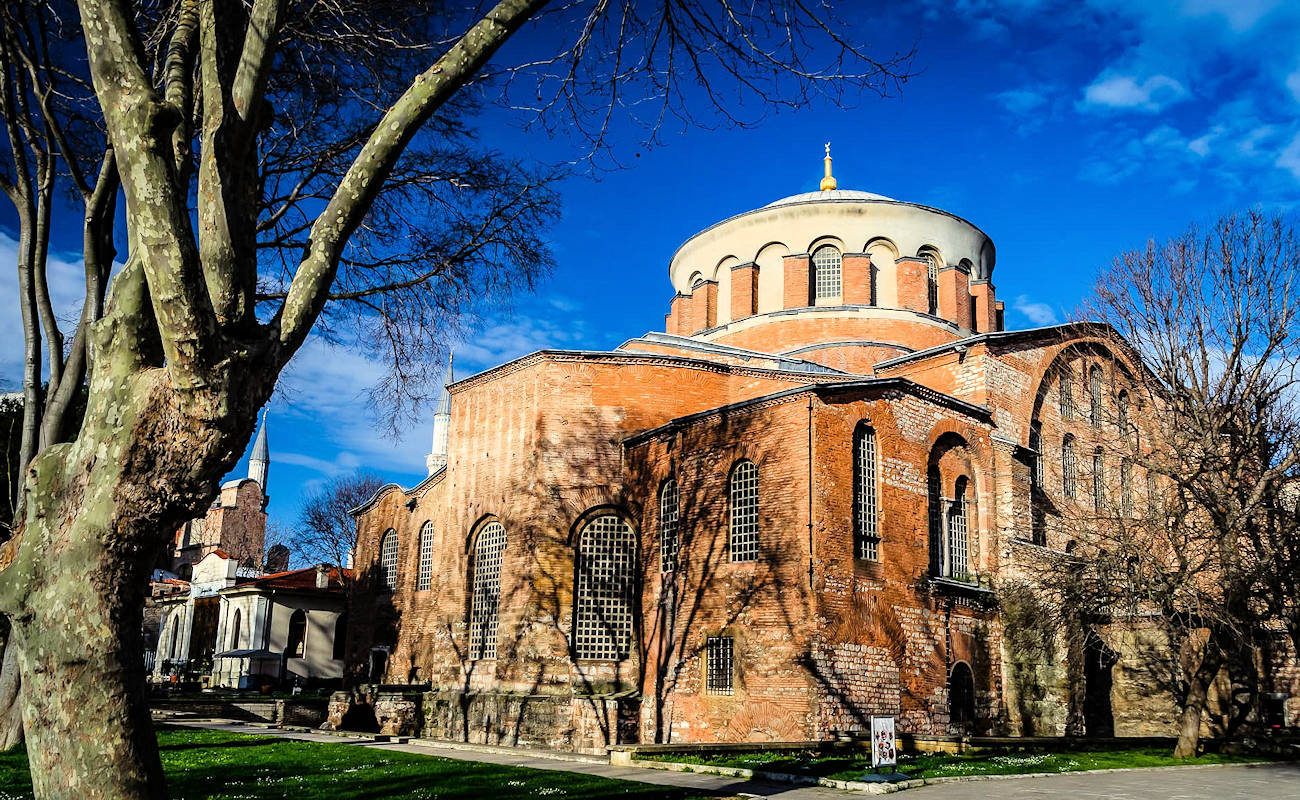
Hagia Irene (Hagia Eirene)
Hagia Irene The Second Largest Church After Hagia Sophia:
Hagia Irene (Hagia Eirene), situated in the outer courtyard of Topkapi Palace, is the oldest church of the Byzantine Empire. Following Hagia Sophia, it was the second largest church in Istanbul. Hagia Irene, originating from “sacred peace” (Hagia Eirene), holds significance as the birthplace of Turkish museology.
Hagia Irene is a representative Byzantine structure constructed on an old temple in 330, utilizing wood materials and architecture. Both Hagia Sophia and Hagia Irene suffered from destruction during the 532 Nika Revolt under Emperator Justinianus’ reign, leading to their reconstruction together.
Three-Nave Basilica
Consisting of three sections, namely naos, narthex and atrium, Hagia Eirene is the sole surviving example of a Byzantine period church featuring a standing atrium. It was originally constructed as a basilica with three naves during the reign of Konstantinos the Great (306–337), and subsequently underwent repairs by Leo III (717–741) as well as his son Constantine Copronymus (741–775) after sustaining damage from the great earthquake of 740. The upper structure of the building underwent a complete renovation, resulting in its current appearance as a basilica-style church with a dome.
Although the structure may have originally been adorned with figurative ornaments during Justinian’s reign (527-565), these were entirely replaced during the repairs undertaken by emperors Leo III and Constantine Copronymus during the Iconoclastic period. The cross depicted on the half dome of the building dates back to this time.
Usage in the Ottoman Empire Era
Following the fall of Constantinople, the church was not converted into a mosque and was instead used as a loot and gun depot (Harbiye Warehouse) for a prolonged period. Minimal alterations were made to both the interior and exterior of the building, and it was later repurposed as the Cebehane (weapons depot). The entrance portico was enhanced with two restored marble inscription tablets, which were added by Sultan Ahmet III. One of these tablets was restored in 1726 by Darü’l-Esliha, and the weapons within the building were arranged, thus transforming the church into a weapons museum.
The second inscription, which dates back to 1744 during the reign of Sultan Mahmud I, indicates that the building underwent restoration before being reconverted back into a weapons depot. During the 19th century, the depot was renamed “Harbiye Ambarı,” which translates to “war academy depot.” In 1846, Fethi Ahmed Pasha, the Artillery Commander in Chief, initiated the organization of the contents into two sections, which officially named the Museum of Early Munitions and Artifacts. In 1869, it became the country’s very first official museum named the Müze-i Hümayun (Imperial Museum). Following this, the building served as a depot again.
The weapons collection underwent reorganization and it served as the first Military Museum from 1908 until 1940.
